Colonial front doors represent the timeless elegance of American architectural heritage, blending historical authenticity with modern functionality. These entrance designs showcase the sophisticated simplicity that defined early American homes, from Georgian grandeur to Cape Cod charm. Whether featuring traditional raised panels, elegant sidelights, or distinctive Dutch door styling, colonial front doors create welcoming entrances that honor architectural tradition while accommodating contemporary living. The beauty lies in their balanced proportions, quality craftsmanship, and ability to complement various colonial home styles. From classic six-panel designs to elaborate Federal-style entrances, these doors serve as focal points that enhance curb appeal while preserving the architectural integrity that makes colonial homes so enduringly popular.

1. Traditional Six-Panel Colonial Door with Brass Hardware
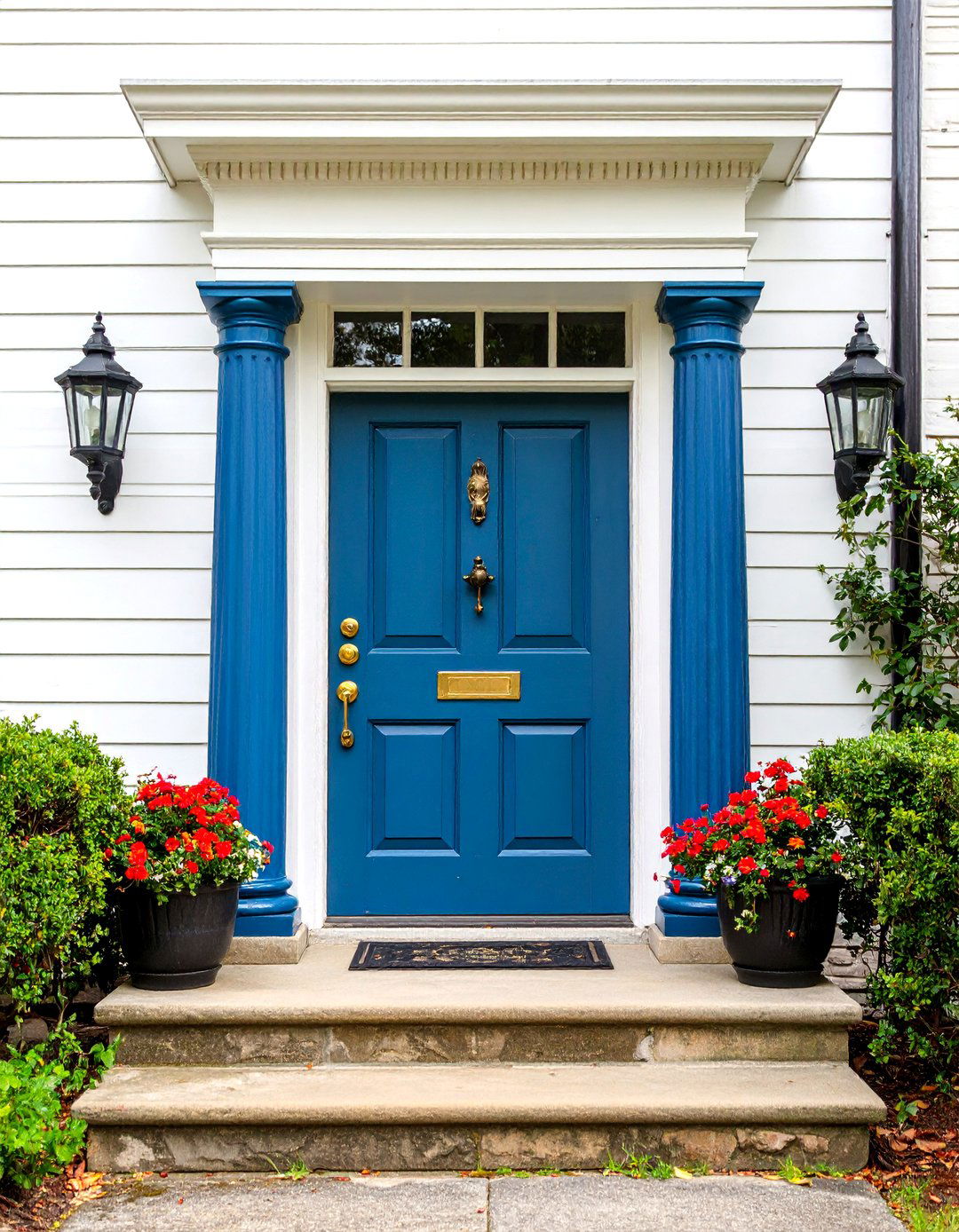
The classic six-panel colonial door remains the quintessential choice for authentic period homes, featuring perfectly proportioned raised panels arranged in symmetrical rows. This timeless design showcases traditional craftsmanship with solid wood construction, typically painted in heritage colors like deep navy or classic black. Brass hardware including thumb latches, strap hinges, and colonial-style knockers enhance the historical authenticity. The door's balanced geometry creates visual harmony with the home's facade, while quality construction ensures longevity. Flanked by simple trim work and often accompanied by a decorative transom, this style works beautifully with Georgian, Federal, and Colonial Revival architecture, maintaining the refined simplicity that defines colonial design.
2. Georgian Colonial Door with Decorative Pilasters
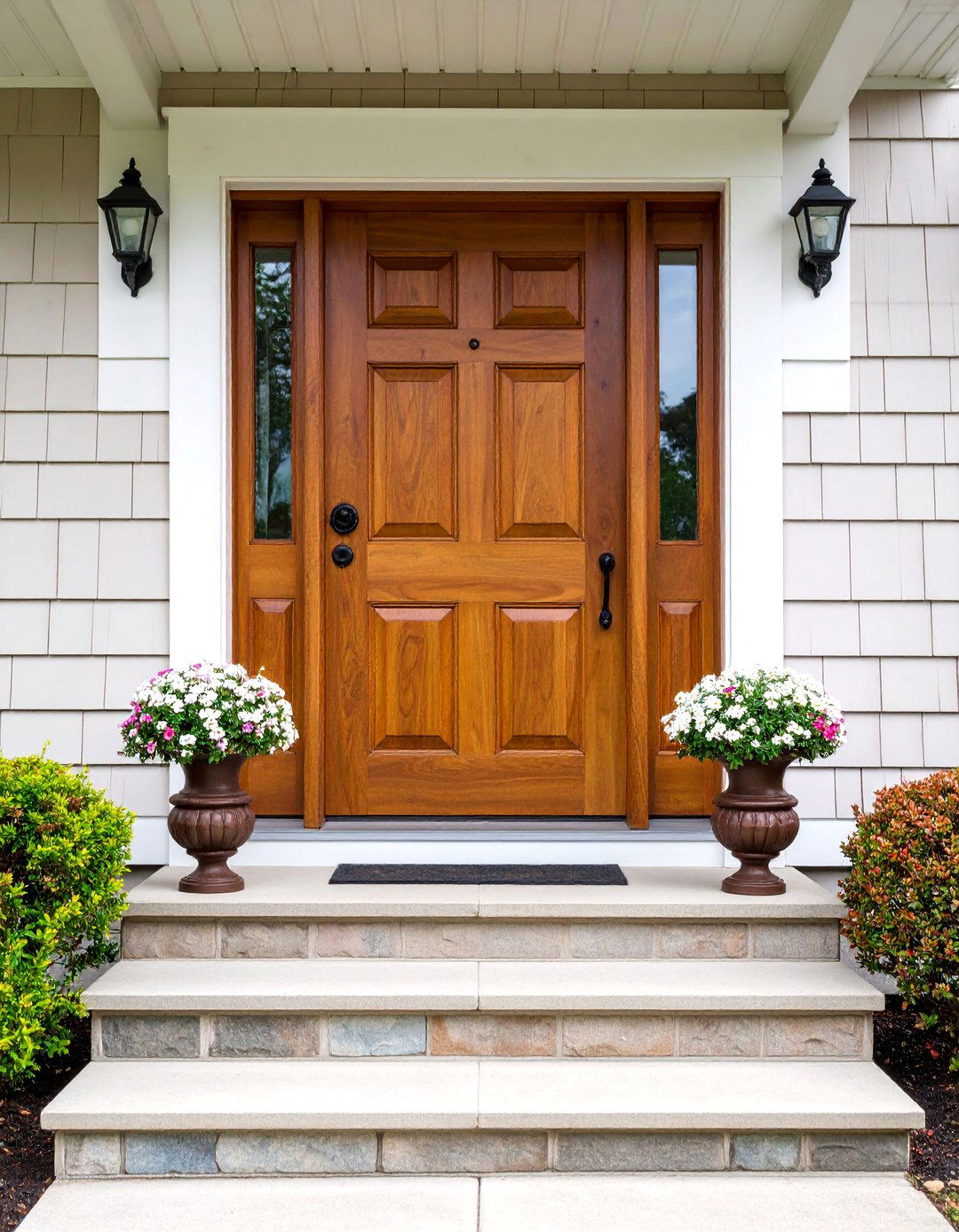
Georgian colonial doors epitomize formal elegance with their elaborate architectural surrounds featuring fluted pilasters, entablature, and classical pediments. The solid wood door typically displays four to six raised panels painted in sophisticated colors like Williamsburg blue or historic white. Decorative moldings frame each panel, while brass hardware adds refined touches. The entrance often includes a rectangular transom with divided lights, enhancing natural light flow into the foyer. Stone or brick surrounds complement the formal design, creating an imposing yet welcoming entrance. This style perfectly suits larger colonial homes where grandeur and symmetry reign supreme, reflecting the refined tastes of 18th-century Georgian architecture.
3. Cape Cod Colonial Door with Natural Wood Finish

Cape Cod colonial doors embrace the coastal simplicity of New England architecture, featuring clean lines and natural wood finishes that celebrate material authenticity. Typically crafted from cedar or pine, these doors showcase beautiful wood grain through clear stains or weathered finishes. The design usually incorporates four to six raised panels with simple beaded edges, maintaining the understated elegance characteristic of Cape Cod style. Wrought iron hardware in black or aged bronze complements the rustic aesthetic. Flanked by white-painted trim and often featuring a small rectangular transom, these doors work perfectly with shingled exteriors and weathered wood siding, creating that quintessential coastal cottage charm.
4. Dutch Colonial Door with Horizontal Split Design

Dutch colonial doors feature the distinctive horizontal split design that allows the top half to open independently from the bottom half, creating practical functionality with historical charm. This unique configuration originally served to keep livestock out while allowing fresh air and light to enter. Modern interpretations maintain this characteristic split while incorporating contemporary materials and finishes. The door typically features raised panels on both sections, painted in traditional colors like barn red or colonial blue. Heavy-duty hinges and authentic Dutch door hardware ensure smooth operation. Surrounded by simple trim and often protected by a small overhang, this style perfectly complements Dutch colonial architecture with its distinctive gambrel roofs.
5. Federal Colonial Door with Fanlight Transom
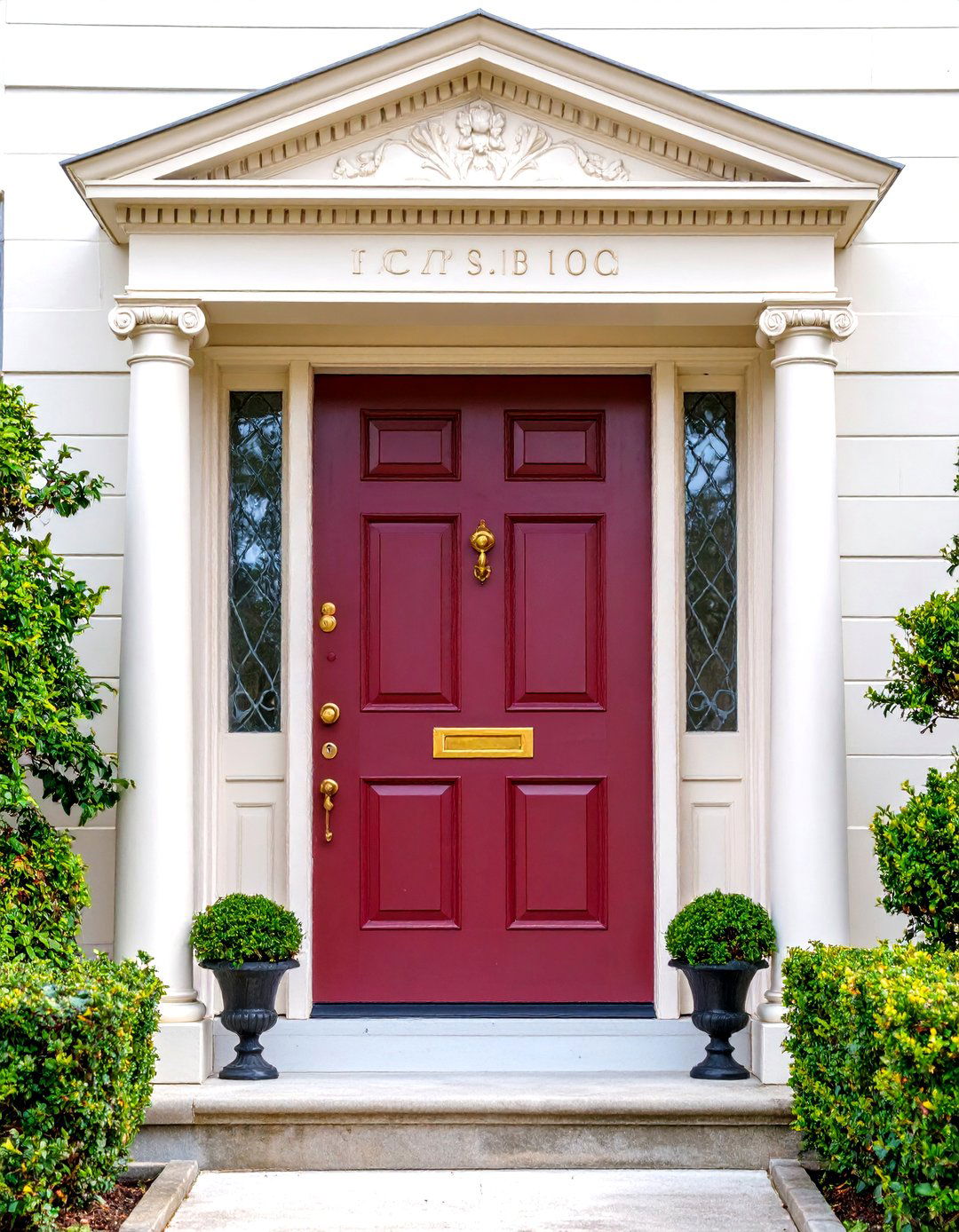
Federal colonial doors showcase the refined elegance of early American Republic style, featuring sophisticated glass transoms with radiating muntins that create stunning fanlight patterns. The solid wood door below typically displays six perfectly proportioned raised panels painted in historically appropriate colors like deep green or colonial blue. Delicate sidelights with matching muntin patterns often flank the door, creating a unified composition that floods the entrance hall with natural light. Slim pilasters and elegant cornices frame the entire assembly, while brass hardware adds authentic period details. This style epitomizes the architectural refinement of the Federal period, perfect for homes built between 1780-1820.
6. Saltbox Colonial Door with Rustic Hardware

Saltbox colonial doors reflect the practical simplicity of early New England architecture, featuring sturdy construction and minimal ornamentation that emphasizes function over decoration. Typically crafted from solid pine or oak, these doors showcase natural wood finishes or traditional milk paint colors like earthy brown or muted blue. The design incorporates four to six raised panels with simple, robust detailing that speaks to colonial craftsmanship. Heavy iron strap hinges and thumb latches provide authentic hardware solutions that complement the rustic aesthetic. Often protected by a simple overhang and surrounded by basic trim work, these doors perfectly suit the unpretentious character of saltbox architecture with its distinctive asymmetrical roofline.
7. Colonial Revival Door with Modern Security Features
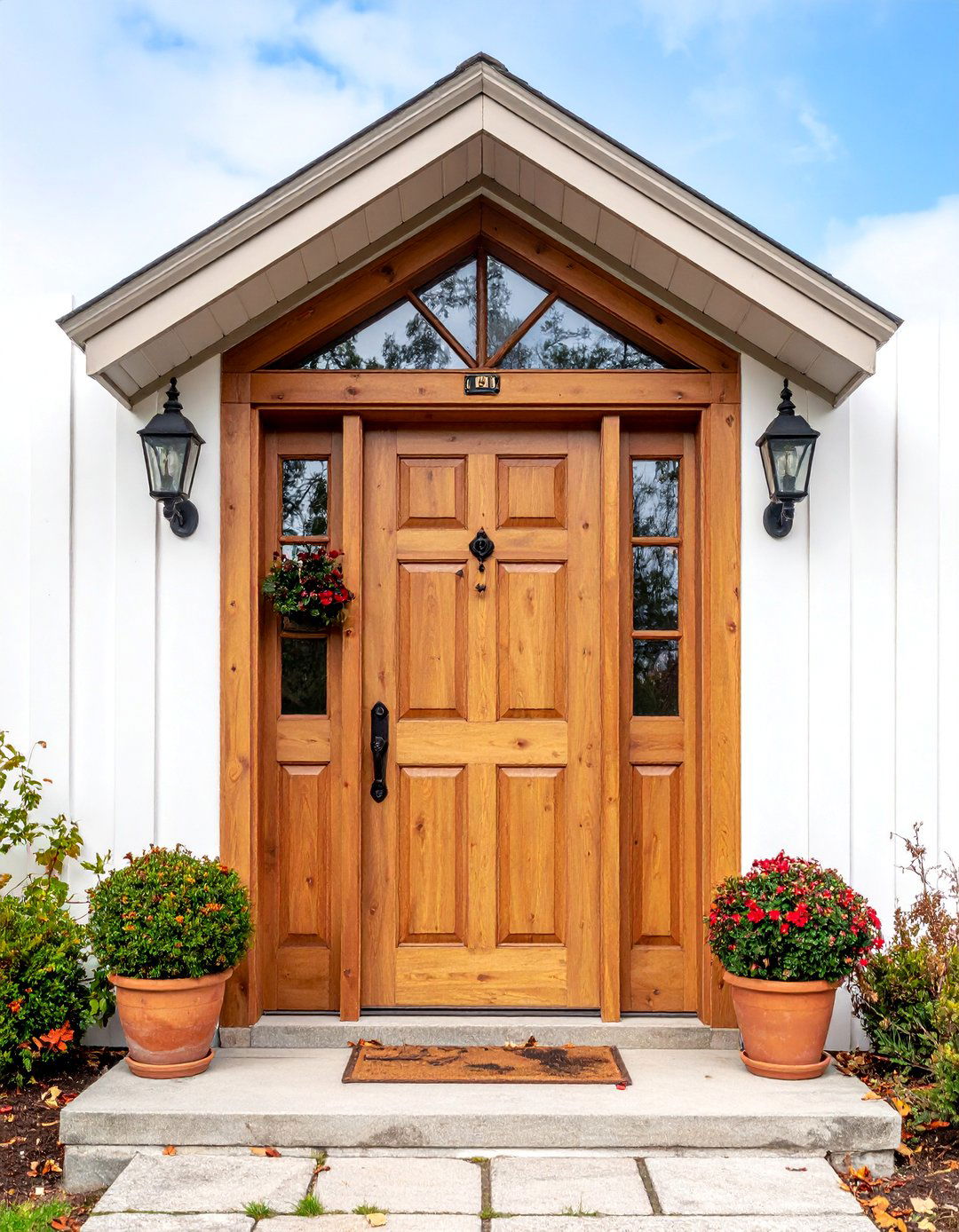
Colonial revival doors blend historical aesthetics with contemporary security technology, featuring traditional six-panel designs enhanced with modern deadbolts, reinforced frames, and optional smart lock capabilities. The solid wood or composite construction maintains authentic proportions while incorporating energy-efficient cores and weather-sealing systems. Classic colors like heritage green or navy blue provide timeless appeal, while brass or bronze hardware bridges traditional and contemporary styles. Insulated glass sidelights and transoms offer natural light without compromising security. This style perfectly accommodates modern homeowners who desire colonial authenticity without sacrificing 21st-century safety and convenience features, making it ideal for new construction colonial-style homes.
8. Georgian Door with Elaborate Pediment Design

Georgian doors with elaborate pediment designs represent the pinnacle of colonial architectural formality, featuring triangular or curved pediments supported by classical columns or pilasters. The door itself typically showcases six raised panels painted in sophisticated colors like deep burgundy or classic black, complemented by ornate brass hardware including decorative thumb latches and period-appropriate hinges. The pediment often features dentil molding, carved rosettes, or other classical details that demonstrate fine craftsmanship. Flanking sidelights and a rectangular transom enhance the grand composition, while stone or painted wood surrounds complete the formal entrance. This style suits larger Georgian colonial homes where architectural grandeur creates impressive curb appeal.
9. Simple Four-Panel Colonial Door with White Trim
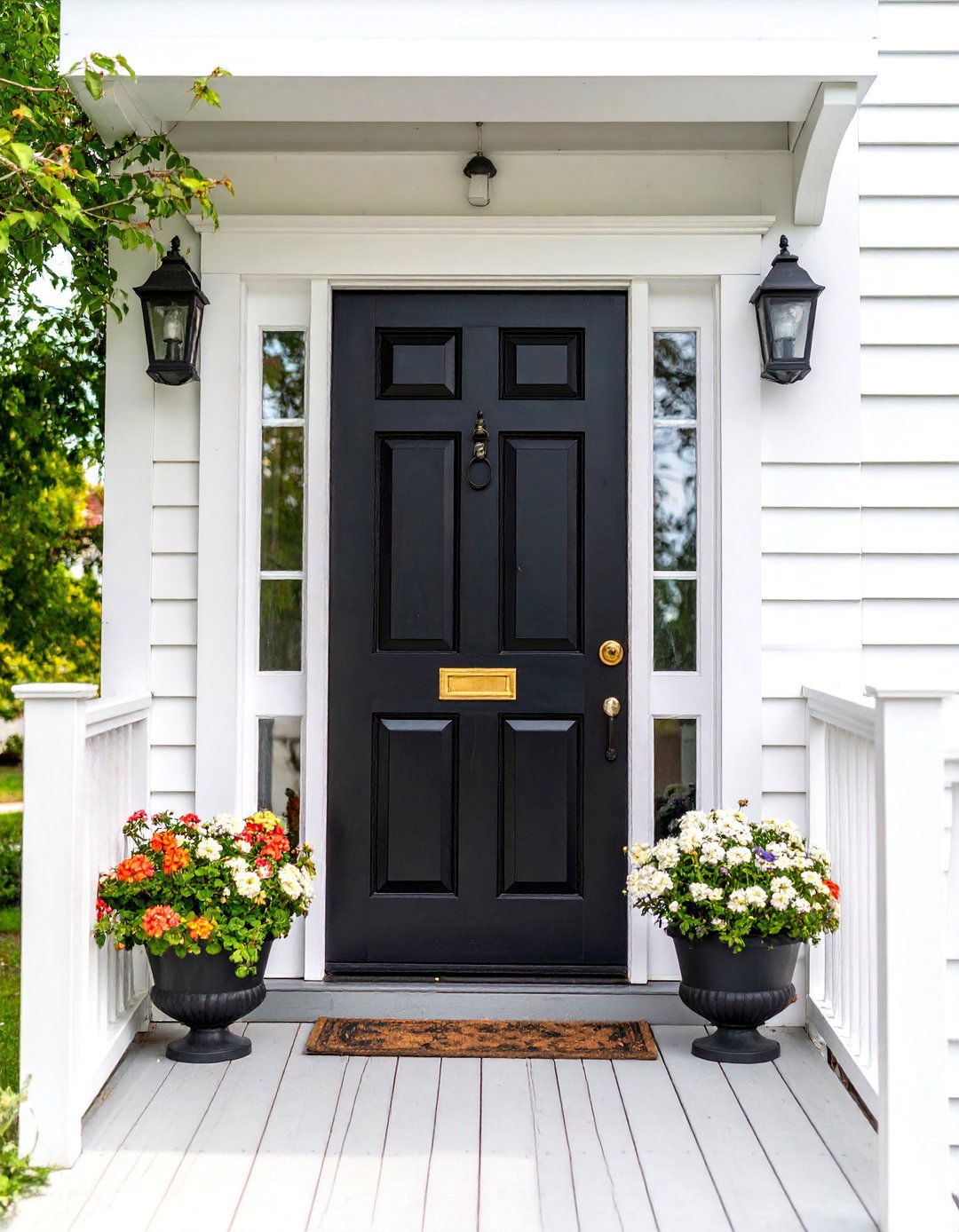
Simple four-panel colonial doors embody the understated elegance of early American design, featuring clean lines and balanced proportions that complement smaller colonial homes and cottages. The raised panels create subtle shadow lines that add visual interest without overwhelming the facade, while traditional colors like sage green or warm cream provide timeless appeal. White-painted trim surrounds create crisp contrast and enhance the door's classic proportions. Brass or black iron hardware maintains period authenticity while simple construction techniques ensure durability. Often featuring a small rectangular transom for additional light, this style works beautifully with Cape Cod, saltbox, and modest Georgian colonial architecture where simplicity and proportion create lasting beauty.
10. Colonial Door with Sidelight Windows
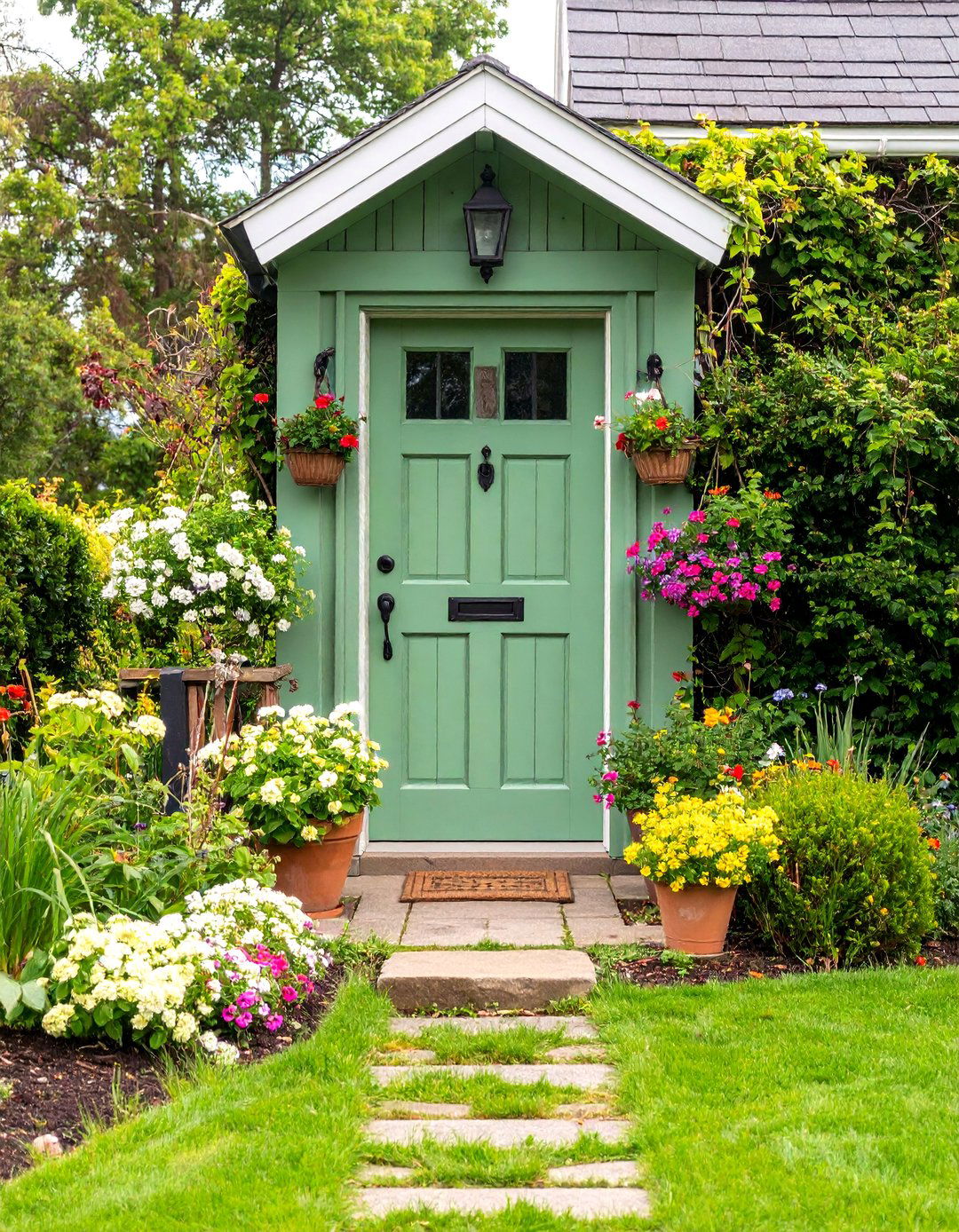
Colonial doors with sidelight windows create grand entrances that maximize natural light while maintaining historical authenticity through carefully proportioned glass panels with traditional muntins. The central door typically features six raised panels painted in classic colors like navy blue or forest green, while matching sidelights display divided glass patterns that echo colonial window designs. Brass hardware and matching trim work unify the composition, creating a cohesive entrance system. The sidelights often feature decorative glass options like clear, frosted, or seeded glass to balance privacy with light transmission. This style perfectly suits larger colonial homes where the enhanced natural light brightens entrance halls while the symmetrical composition reinforces the balanced architecture.
11. Rustic Colonial Door with Board and Batten Construction
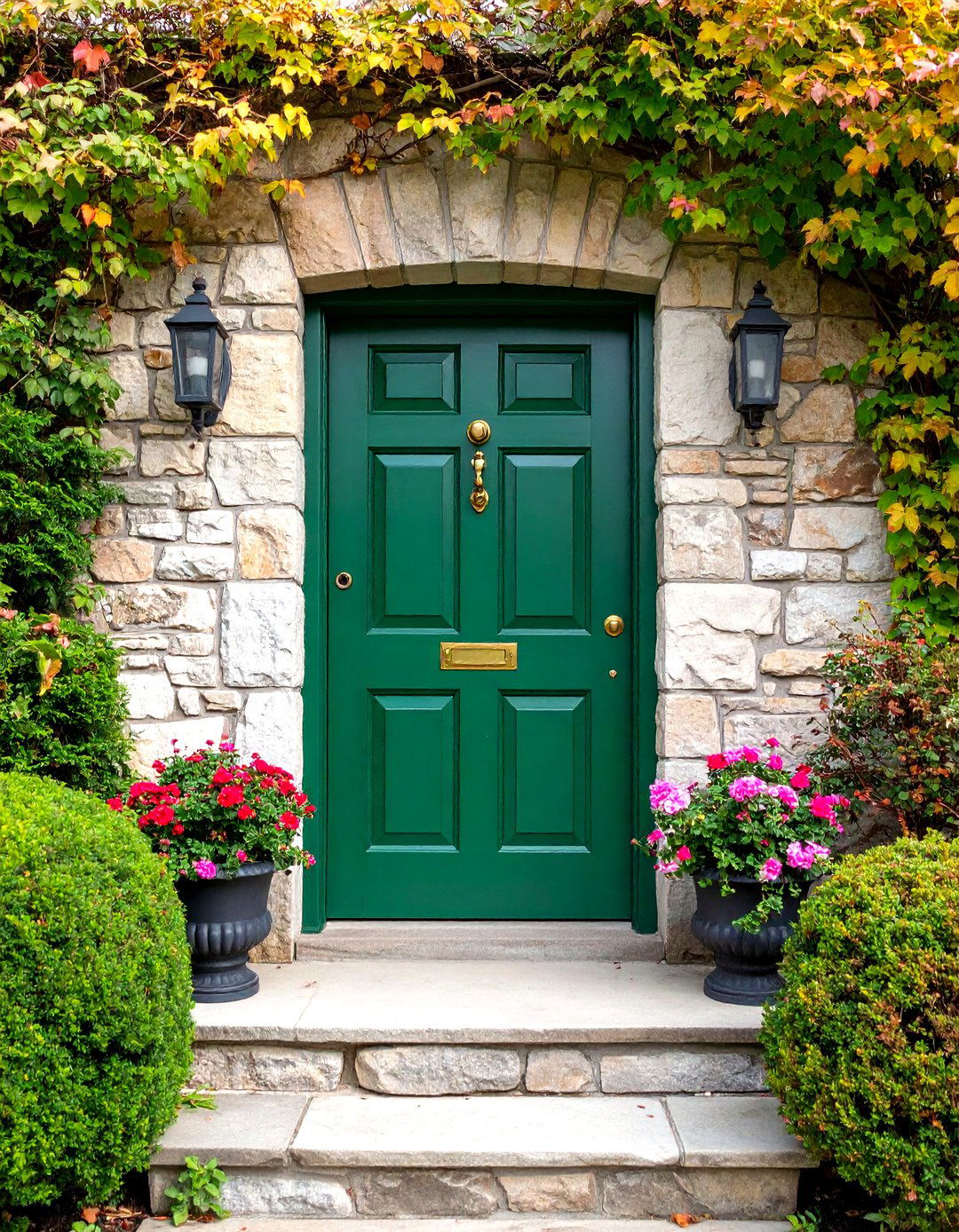
Rustic colonial doors feature board and batten construction that reflects the practical building techniques of early American settlers, showcasing vertical wood planks secured by horizontal battens for authentic frontier charm. Typically crafted from pine, oak, or reclaimed wood, these doors display natural finishes or traditional stains that celebrate wood's inherent beauty. Heavy iron hardware including strap hinges, slide bolts, and wrought iron handles enhance the rustic aesthetic. The simple yet sturdy construction speaks to colonial self-reliance and craftsmanship. Often protected by extended eaves and surrounded by simple trim, this style complements log homes, timber frame houses, and colonial farmhouses where rustic authenticity creates warm, welcoming entrances.
12. Painted Colonial Door in Heritage Blue
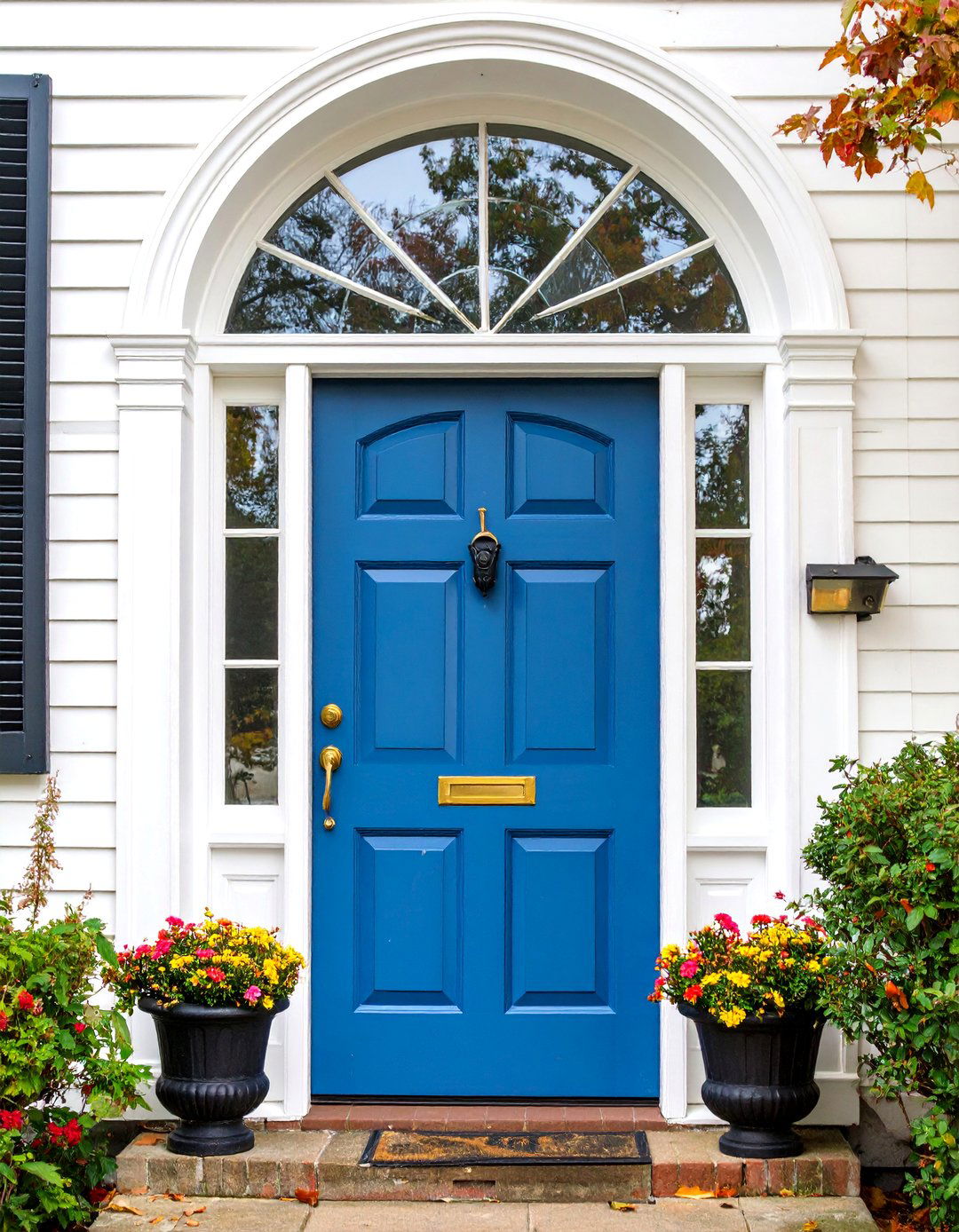
Heritage blue colonial doors capture the timeless appeal of traditional American color palettes, featuring deep, rich blue tones that complement brick, stone, and wood siding with sophisticated elegance. The classic six-panel design showcases raised panels that create beautiful shadow lines, while the historically accurate blue paint reflects colonial preferences for bold yet refined color choices. Brass hardware including period-appropriate hinges, thumb latches, and decorative knockers enhance the authentic appearance. White or cream trim provides crisp contrast that makes the blue color pop, while traditional proportions ensure the door harmonizes with colonial architecture. This color choice works beautifully with red brick, white clapboard, and natural stone facades.
13. Colonial Door with Decorative Glass Panels

Colonial doors with decorative glass panels blend traditional solid construction with elegant glass inserts that provide natural light while maintaining period authenticity through appropriate patterns and proportions. The door typically features a combination of raised wood panels and glass sections with colonial-style muntins creating geometric patterns. Traditional colors like deep green or colonial red paint complement the glass elements, while brass hardware adds period-appropriate details. The glass panels often showcase clear, seeded, or lightly textured glass that provides privacy while allowing light transmission. This style works particularly well with Federal and Georgian colonial architecture where sophisticated details enhance the formal entrance character.
14. Black Colonial Door with Brass Accents
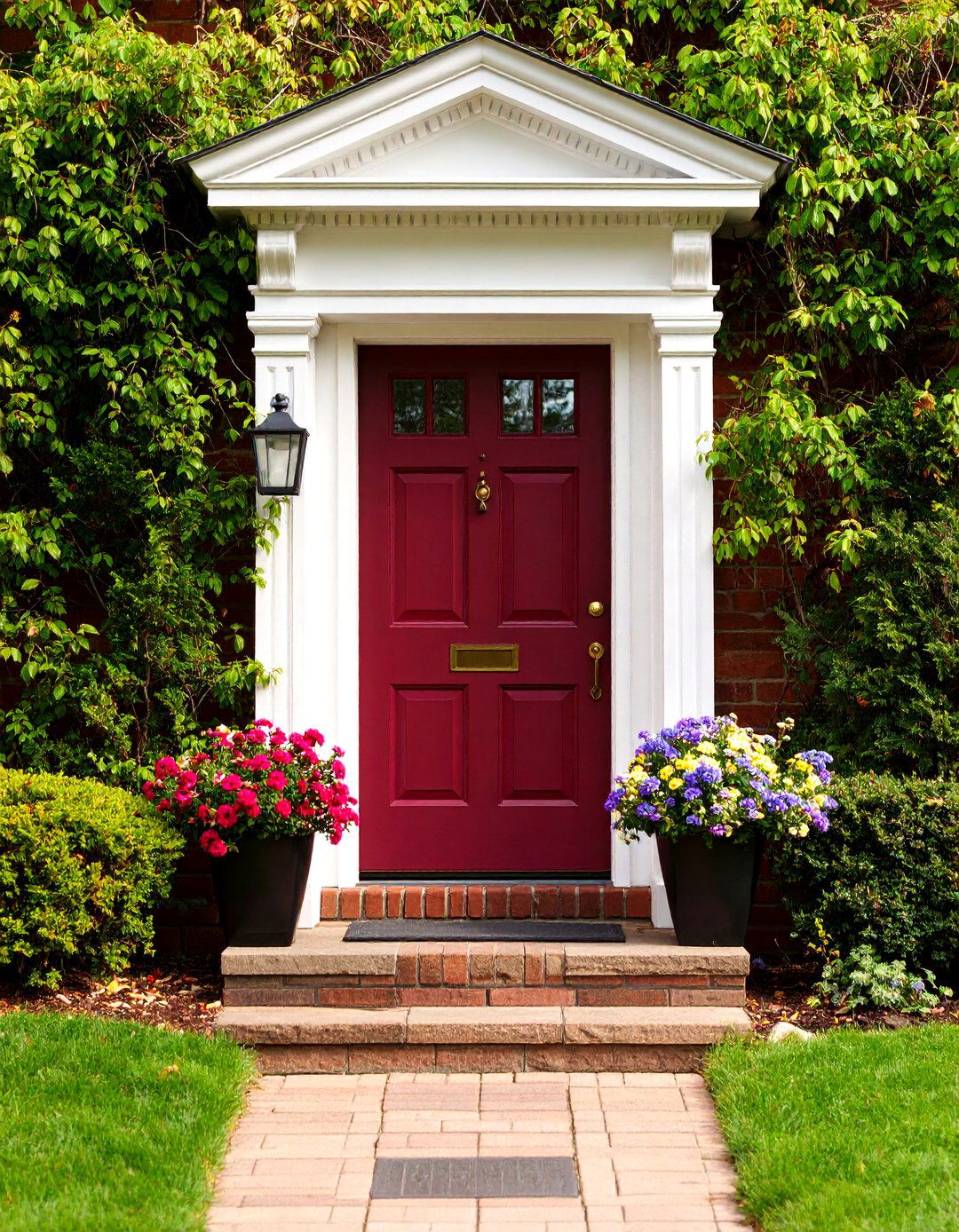
Black colonial doors create dramatic focal points that emphasize architectural symmetry while providing timeless elegance through classic color choice and quality brass hardware. The deep black finish highlights the door's raised panel construction and fine proportions, creating striking contrast against white trim and colonial siding materials. Polished brass hinges, thumb latches, and decorative hardware provide warm metallic accents that elevate the overall design. Often featuring a brass or bronze door knocker and matching house numbers, this combination never goes out of style. The sophisticated color choice works beautifully with brick, stone, and painted wood exteriors, making it a versatile option for various colonial architectural styles.
15. Dutch Door with Cottage Garden Styling

Dutch doors with cottage garden styling combine the practical split-door design with charming pastoral elements that create welcoming entrances perfect for colonial farmhouses and country homes. The horizontal division allows independent operation of upper and lower sections, while cottage garden details like flower boxes, climbing vines, and rustic hardware enhance the romantic appeal. Painted in soft colors like sage green or cream white, these doors complement informal landscaping and picket fence surroundings. Wrought iron hardware and traditional thumb latches maintain authentic functionality, while the cottage garden setting with herbs, flowers, and natural materials creates an inviting entrance that celebrates the connection between indoor and outdoor living.
16. Colonial Door with Arched Transom Window

Colonial doors with arched transom windows create elegant entrances that combine traditional door design with sophisticated glass elements that enhance both aesthetics and natural light. The solid wood door typically features classic raised panels painted in heritage colors like deep red or navy blue, while the arched transom above showcases divided glass with traditional muntins. The curved glass element adds architectural interest while maintaining colonial proportions and authenticity. Flanking pilasters or simple trim work frame the composition, creating a unified entrance design. This style works particularly well with Georgian and Federal colonial architecture where classical details and refined proportions create impressive yet welcoming entrances that honor historical precedents.
17. Green Colonial Door with Natural Stone Surround

Green colonial doors surrounded by natural stone create stunning entrances that blend traditional color choices with substantial masonry work that emphasizes permanence and craftsmanship. Forest green, sage, or hunter green paint options provide sophisticated color choices that complement stone's natural textures and tones. The door typically features six raised panels with quality brass hardware including hinges, thumb latches, and decorative knockers. Local stone varieties like fieldstone, limestone, or granite create authentic regional character while providing durable, low-maintenance surrounds. This combination works beautifully with colonial homes featuring stone or mixed-material construction, creating entrances that celebrate both traditional color preferences and the lasting beauty of natural materials.
18. Federal Colonial Door with Elliptical Fanlight

Federal colonial doors with elliptical fanlights represent the architectural refinement of the early American Republic period, featuring sophisticated glass patterns that create beautiful light displays while maintaining classical proportions. The solid wood door below typically showcases six perfectly proportioned raised panels painted in period-appropriate colors like Williamsburg blue or classic white. The elliptical fanlight above features radiating muntins that create stunning geometric patterns, often accompanied by matching sidelights for enhanced natural light. Delicate trim work and classical details frame the composition, while brass hardware provides authentic period touches. This style epitomizes Federal period elegance and works perfectly with homes built during America's early years of independence.
19. Colonial Door with Raised Panel Shutters
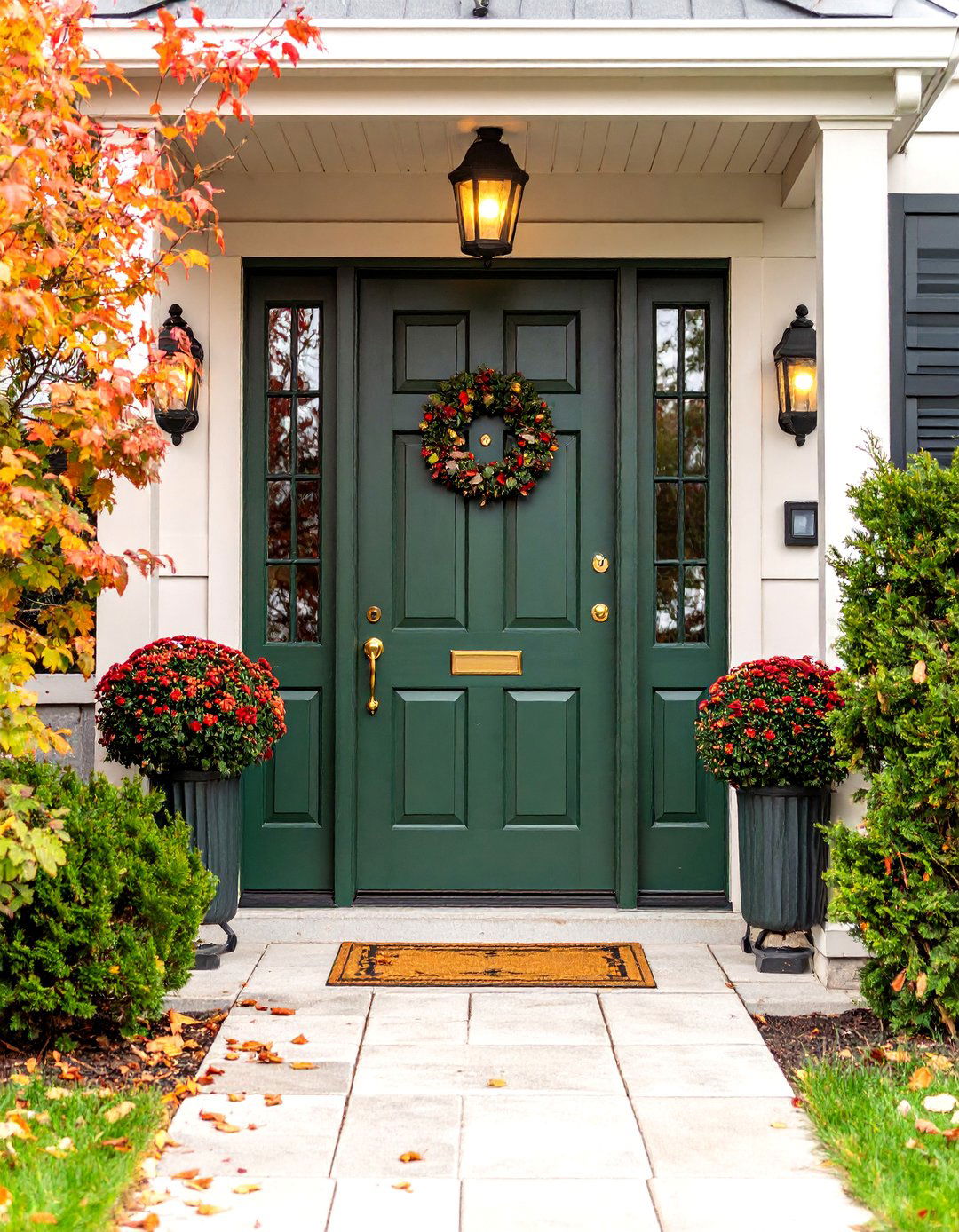
Colonial doors flanked by raised panel shutters create cohesive entrances that emphasize symmetry and traditional craftsmanship through matching design elements and coordinated color schemes. The door and shutters typically feature similar raised panel construction with matching paint colors like colonial blue, deep green, or classic black. Functional shutter hardware including hinges and slide bolts maintain authentic appearance, while the door features traditional brass or iron hardware. The unified design approach creates strong architectural rhythm and enhances the colonial home's balanced facade. This style works particularly well with Georgian and Cape Cod colonial architecture where symmetrical design elements and matching details reinforce the orderly, refined character of colonial design principles.
20. Weathered Colonial Door with Aged Patina

Weathered colonial doors with aged patina celebrate the natural aging process that gives colonial architecture its distinctive character, featuring time-worn finishes that suggest generations of family history. The solid wood construction shows gentle wear patterns, faded paint, and natural weathering that creates authentic vintage appeal. Traditional hardware displays appropriate aging with brass that has developed natural patina or iron that shows honest rust. The aged appearance complements colonial homes with similar weathered characteristics, creating cohesive facades that honor the passage of time. While appearing vintage, modern construction techniques ensure durability and security. This style perfectly suits historic colonial homes and new construction seeking authentic period character.
21. Colonial Door with Dentil Molding Trim
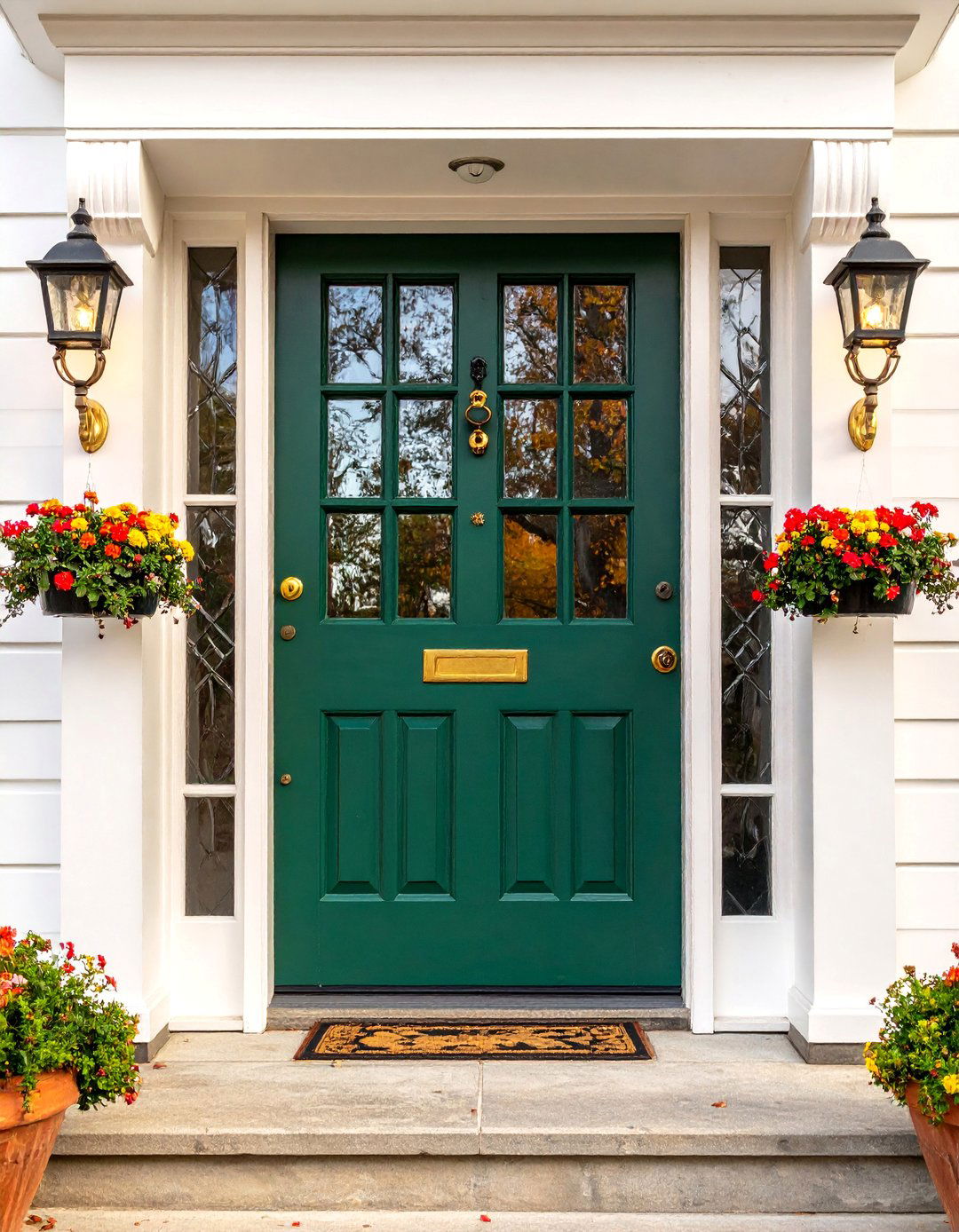
Colonial doors framed by dentil molding trim showcase the sophisticated architectural details that characterized refined colonial construction, featuring small rectangular blocks that create rhythmic patterns around door openings. The door typically displays classic raised panel construction painted in traditional colors like deep burgundy or navy blue, while the dentil molding provides elegant architectural framing. Classical proportions and quality craftsmanship create entrances worthy of the finest colonial homes. Brass hardware and additional classical details like pilasters or cornices enhance the formal character. This style works particularly well with Georgian colonial architecture where classical details and refined proportions create impressive entrances that demonstrate architectural sophistication and attention to historical accuracy.
22. Bright Red Colonial Door with Brass Knocker
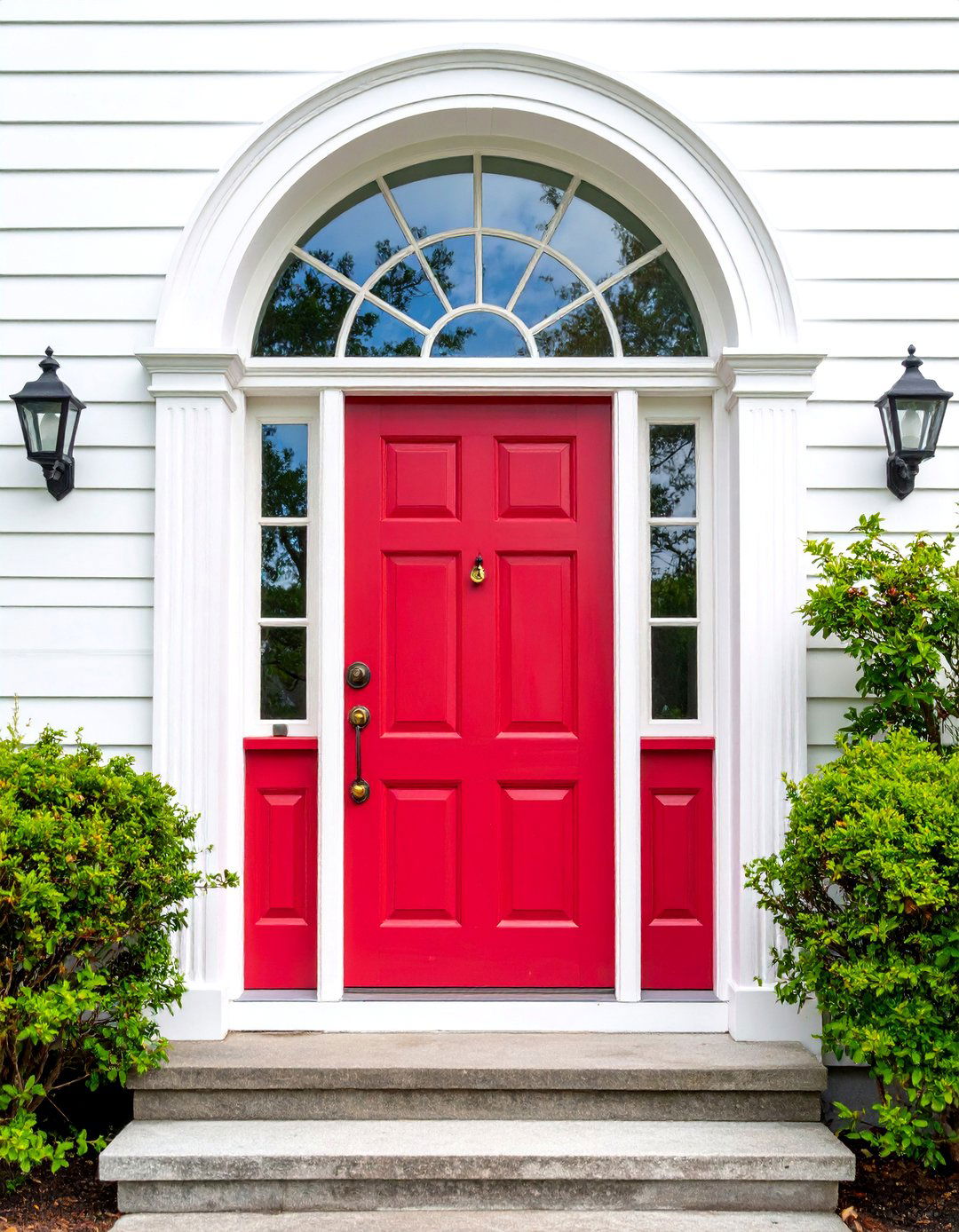
Bright red colonial doors create bold, welcoming entrances that honor traditional American color preferences while providing striking contrast against neutral siding and trim colors. The vibrant red paint emphasizes the door's raised panel construction and classical proportions, making it a true focal point of the home's facade. A prominent brass door knocker serves as both functional hardware and decorative element, often featuring traditional designs like pineapples, eagles, or geometric patterns. Quality brass hinges and thumb latches complement the knocker while maintaining period authenticity. This classic color combination works beautifully with white trim, brick facades, and stone surrounds, creating entrances that embody the warmth and hospitality of colonial America.
23. Colonial Door with Leaded Glass Sidelights

Colonial doors with leaded glass sidelights combine traditional solid door construction with elegant glass elements that provide natural light while maintaining period authenticity through appropriate lead patterns and proportions. The central door typically features classic raised panels painted in sophisticated colors like deep green or colonial blue, while the leaded glass sidelights display geometric patterns that echo colonial window designs. The lead came creates traditional diamond or rectangular patterns that filter light beautifully while providing privacy. Brass or bronze hardware maintains period authenticity, while careful proportions ensure the glass elements complement rather than overwhelm the traditional door design. This style suits formal colonial entrances where refined details enhance architectural sophistication.
24. Colonial Door with Rope Molding Details
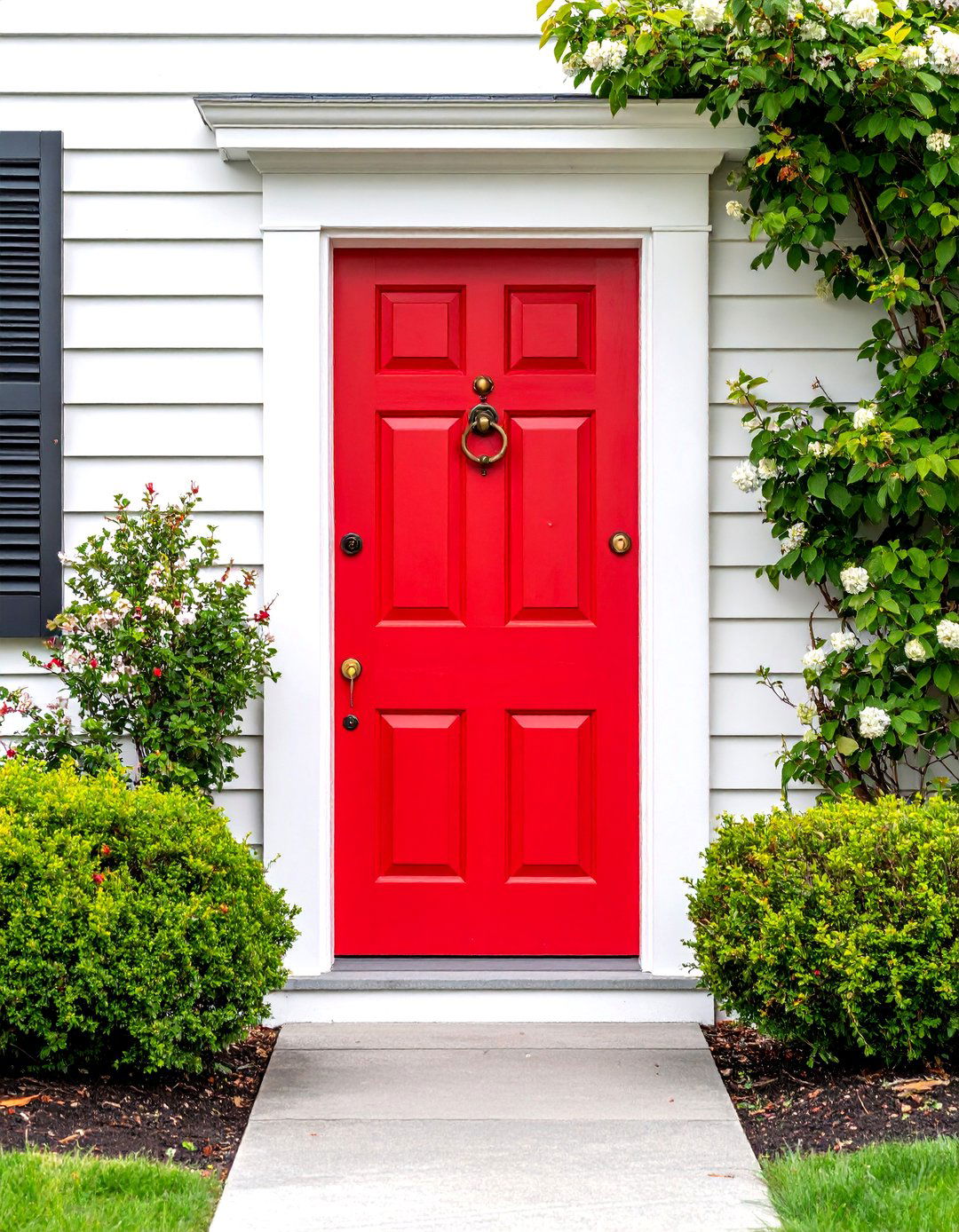
Colonial doors featuring rope molding details showcase the sophisticated woodworking techniques that distinguished fine colonial craftsmanship, with twisted rope patterns carved into door panels and surrounding trim work. The intricate molding adds texture and visual interest while maintaining traditional proportions and classical design principles. Typically painted in heritage colors like deep blue or forest green, these doors demonstrate the attention to detail that characterized quality colonial construction. Brass hardware complements the refined carving work, while the rope molding patterns create subtle shadow lines that enhance the door's dimensional quality. This style works particularly well with Georgian and Federal colonial architecture where sophisticated details and quality craftsmanship create entrances that reflect the finest traditions of colonial woodworking.
25. Modern Colonial Door with Energy Efficient Features
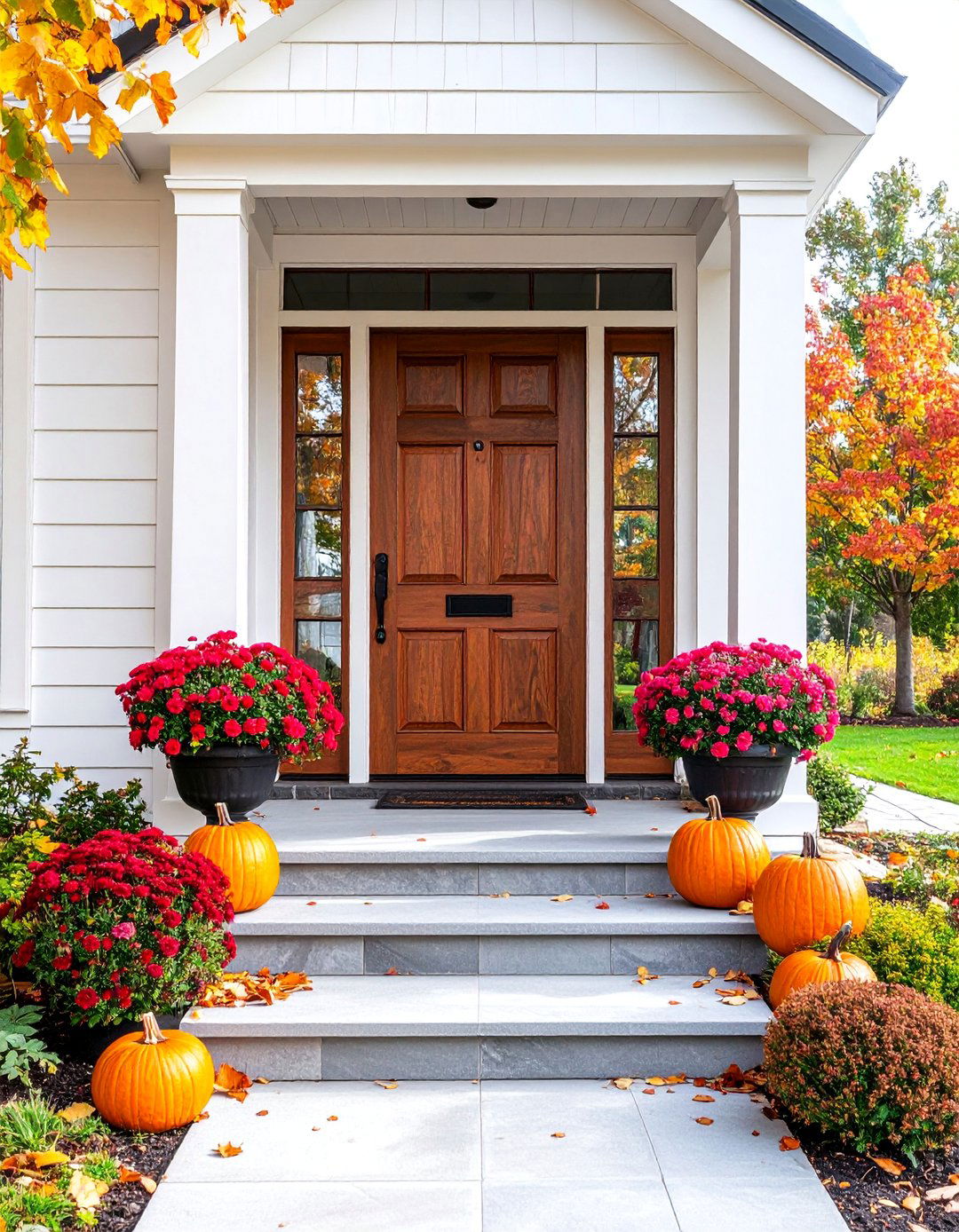
Modern colonial doors combine traditional aesthetics with contemporary performance features, offering energy efficiency, security, and convenience while maintaining authentic colonial appearance and proportions. Advanced construction includes insulated cores, weatherstripping systems, and optional smart lock technology housed within traditional six-panel designs. Heritage paint colors and quality hardware maintain visual authenticity while modern materials ensure longevity and performance. Insulated glass options for transoms and sidelights provide natural light without energy loss. This style perfectly accommodates homeowners who desire colonial character with modern functionality, featuring traditional raised panels, classical proportions, and period-appropriate colors enhanced by 21st-century technology for comfort, security, and energy efficiency in contemporary colonial-style homes.
Conclusion:
Colonial front doors represent more than mere entrances—they embody American architectural heritage through timeless design principles that continue to inspire modern homeowners. From traditional six-panel designs to sophisticated Federal-style entrances with elegant fanlights, these doors celebrate the craftsmanship and attention to detail that defined colonial construction. Whether featuring classic colors like navy blue and forest green or incorporating modern conveniences like energy-efficient cores and smart locks, colonial doors successfully bridge historical authenticity with contemporary functionality. The enduring appeal lies in their balanced proportions, quality materials, and ability to enhance curb appeal while honoring architectural tradition.


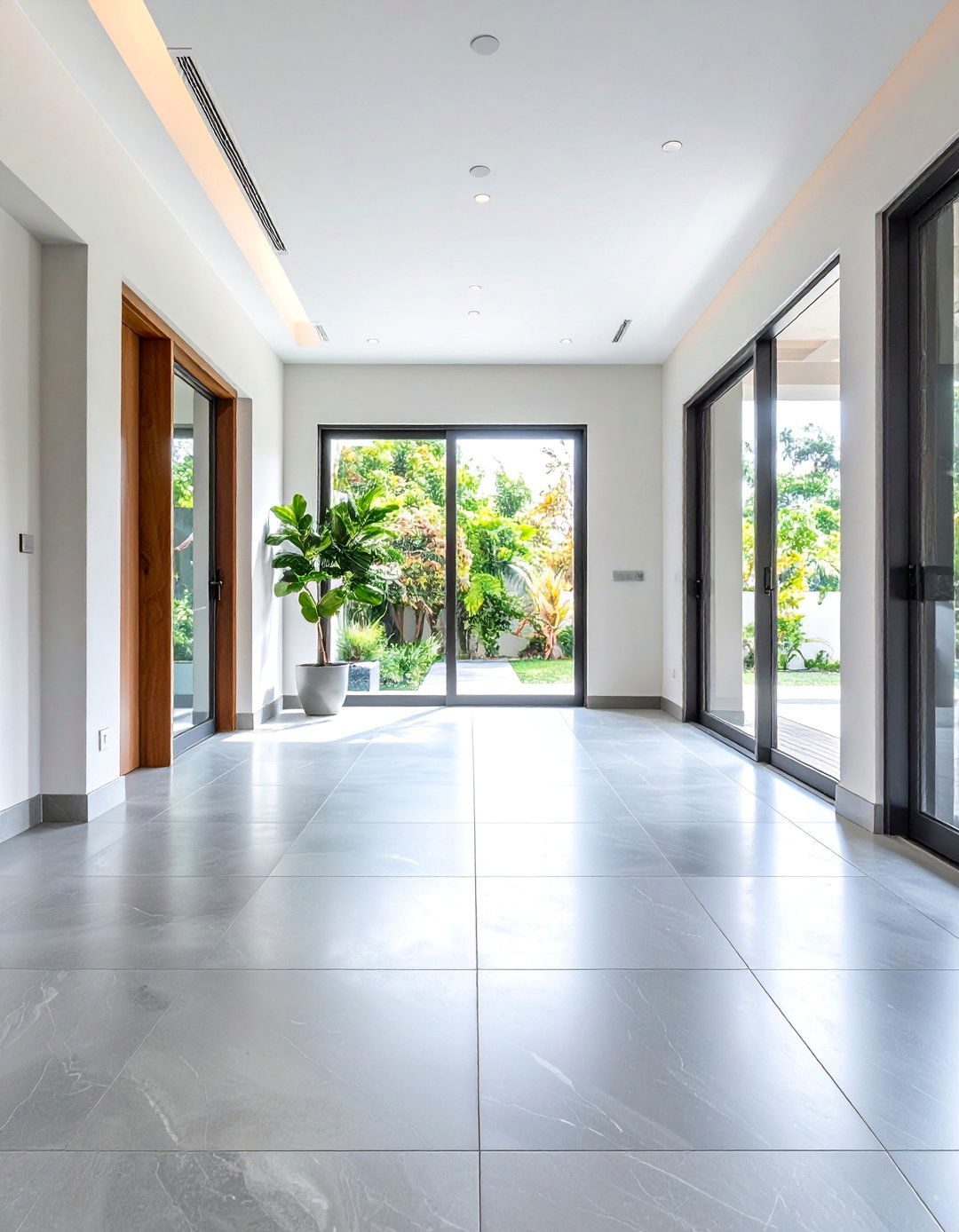

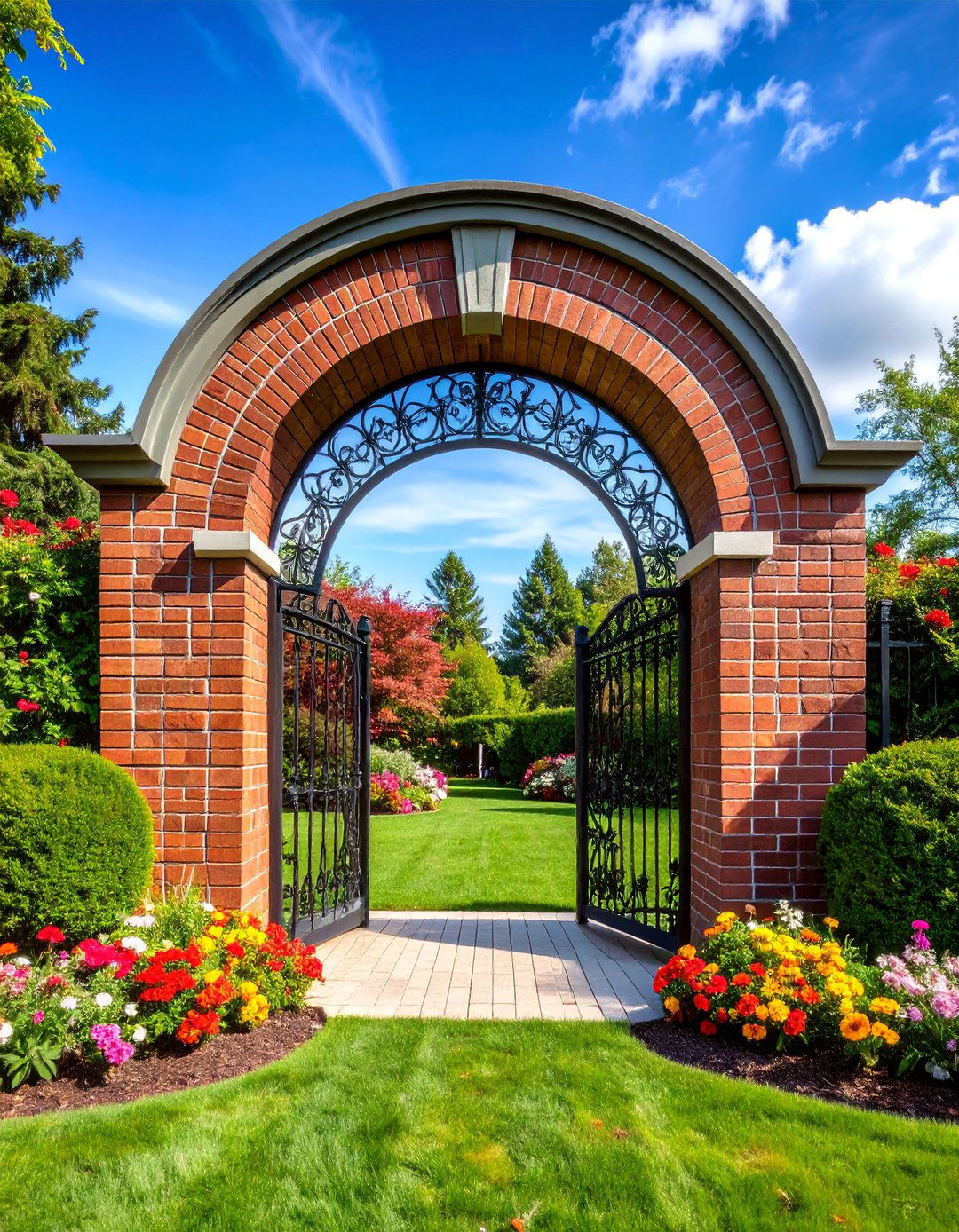
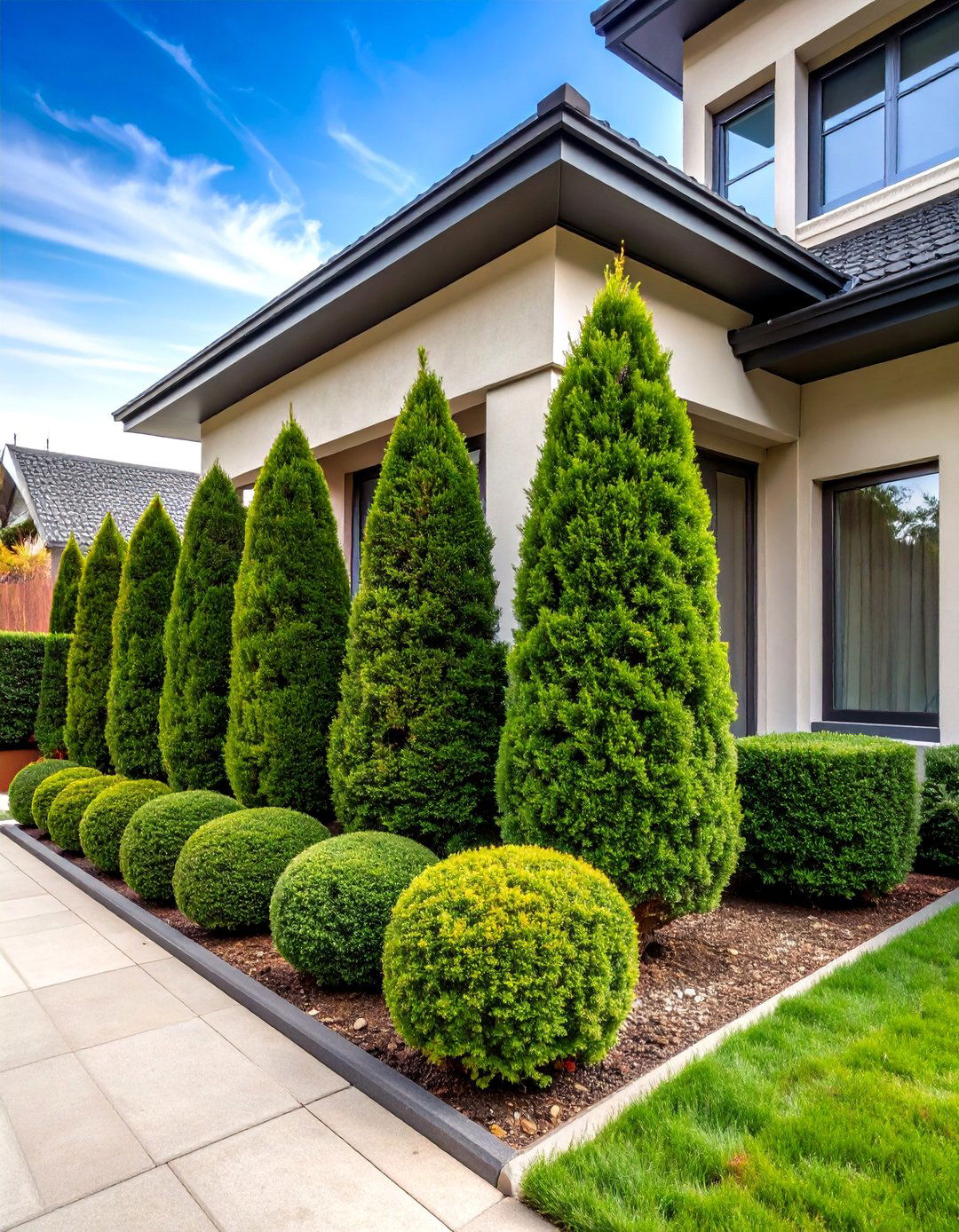
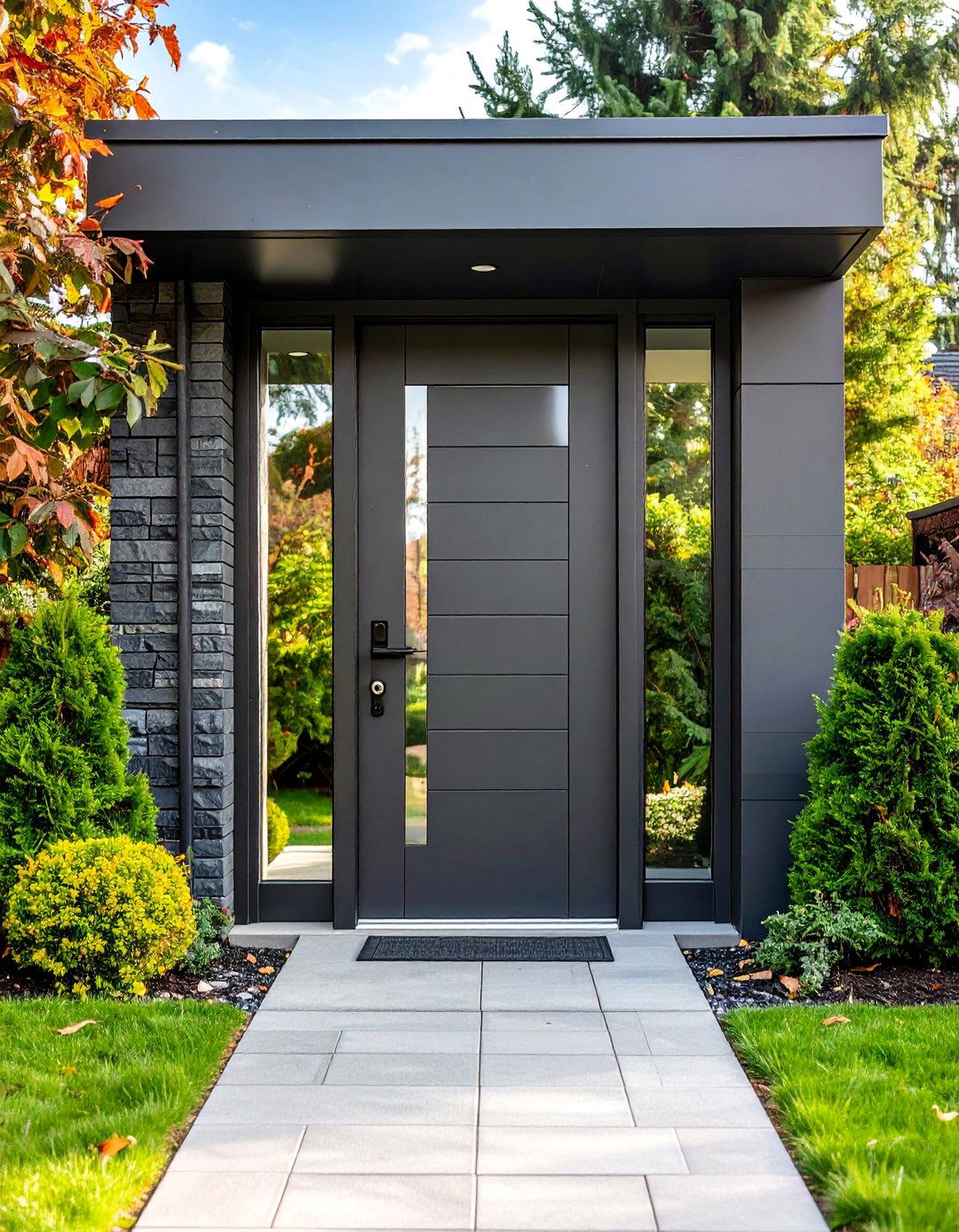
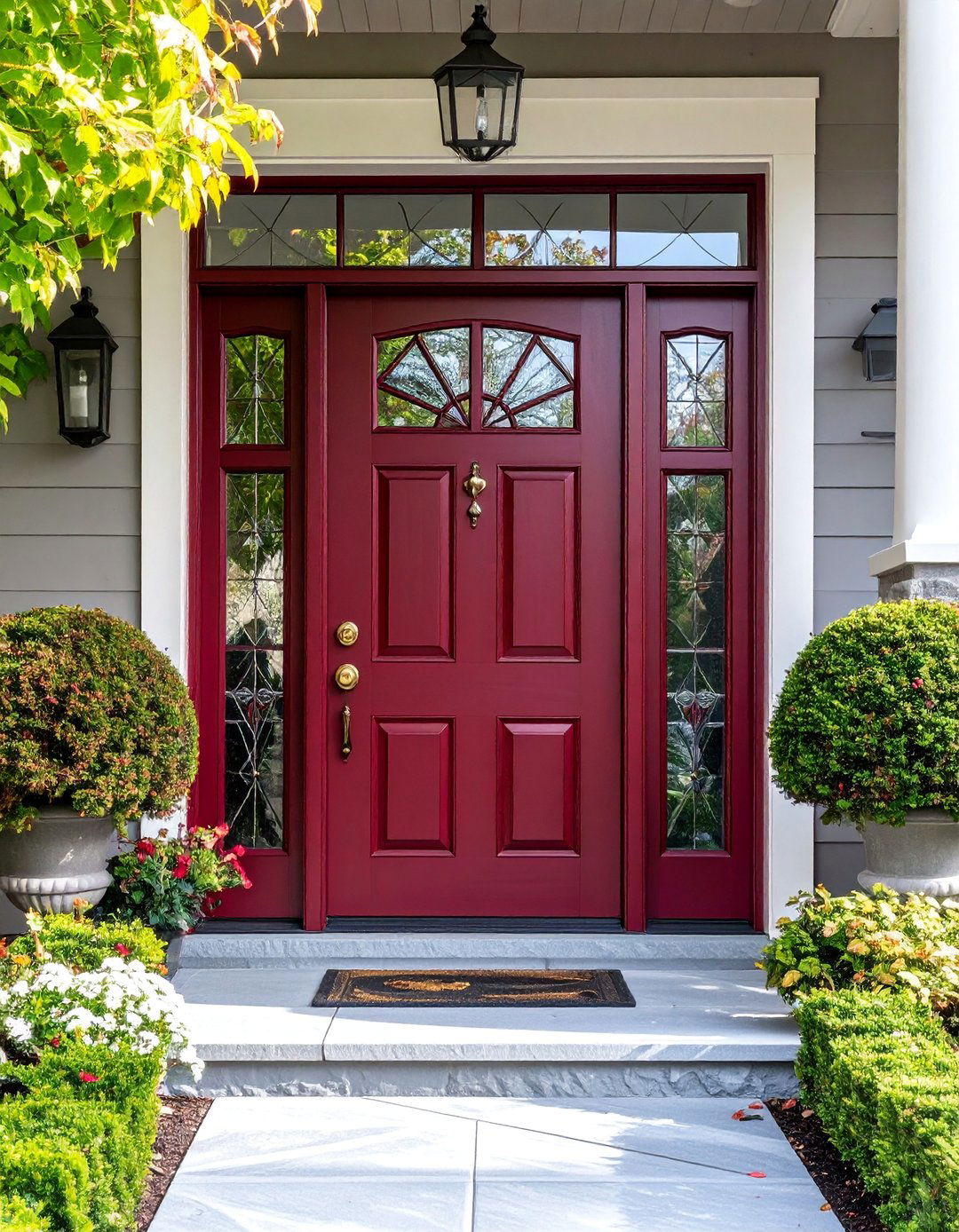
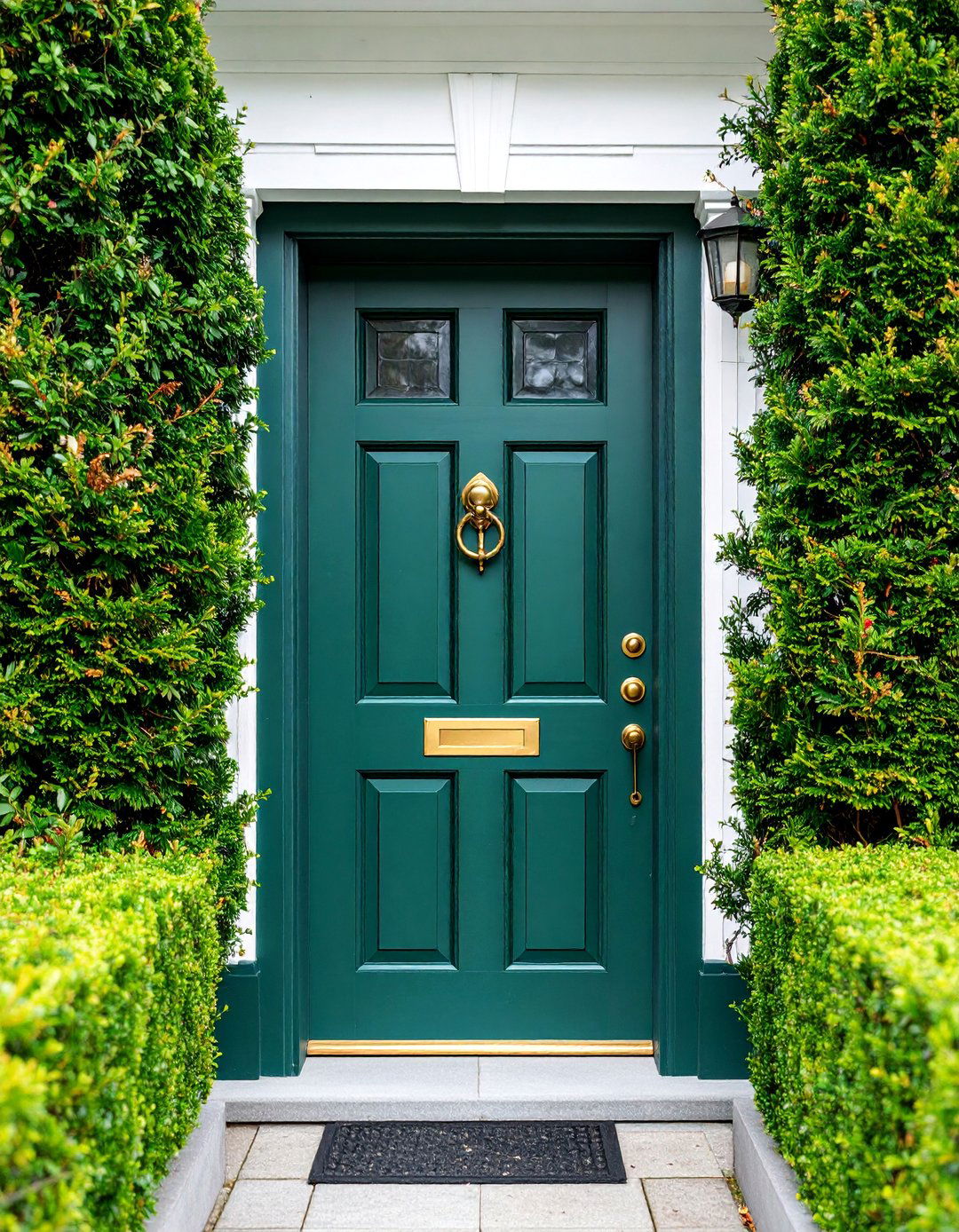
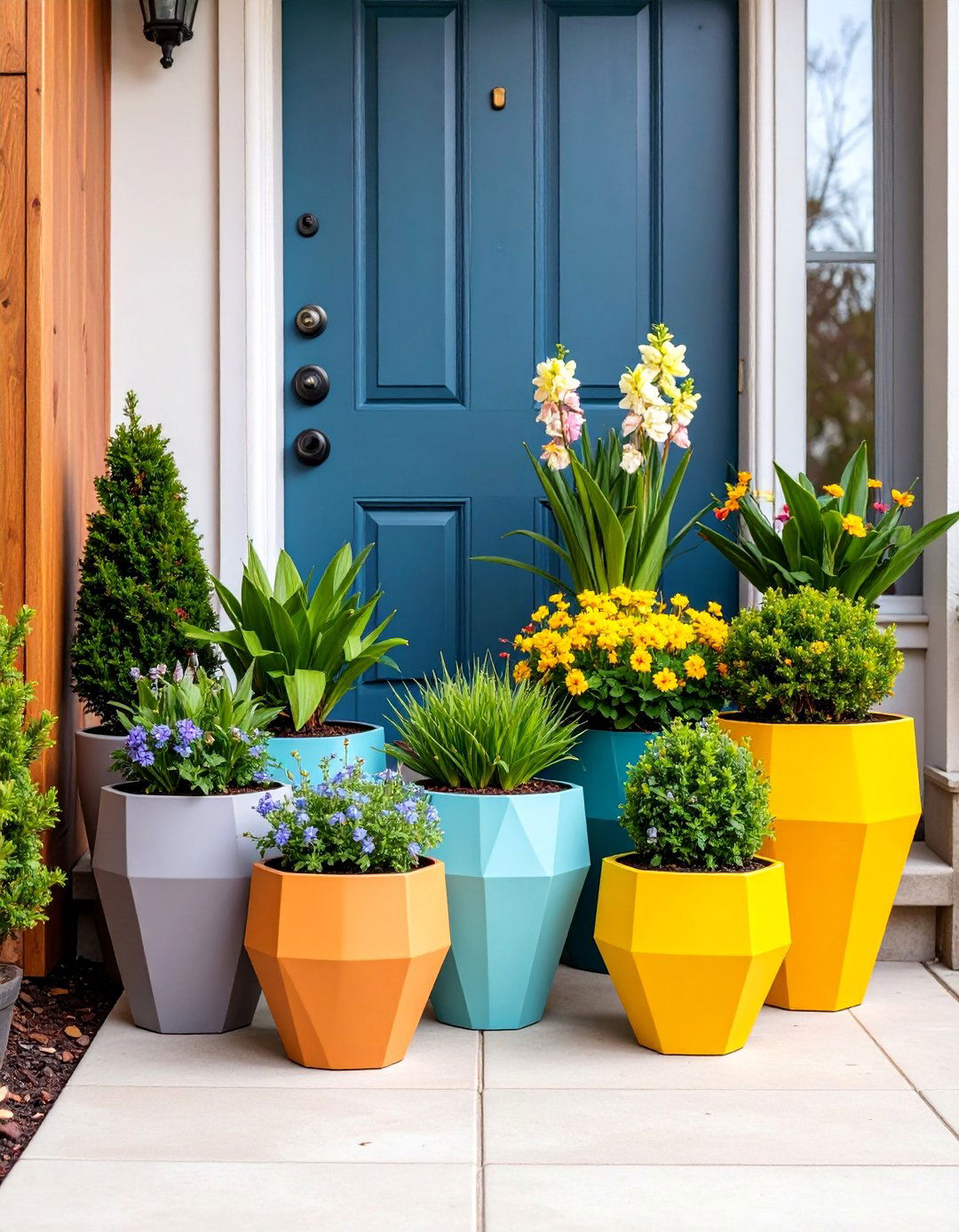

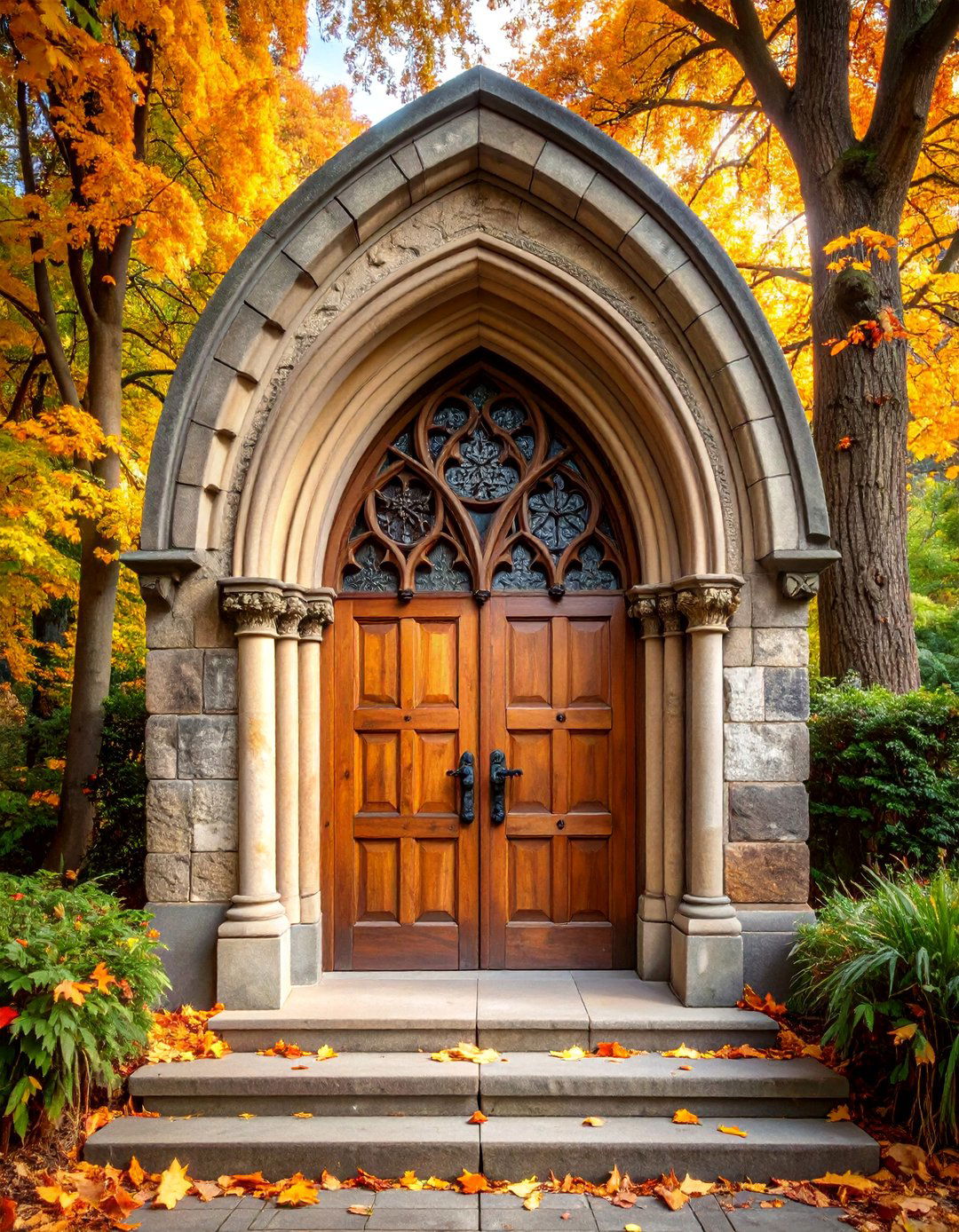
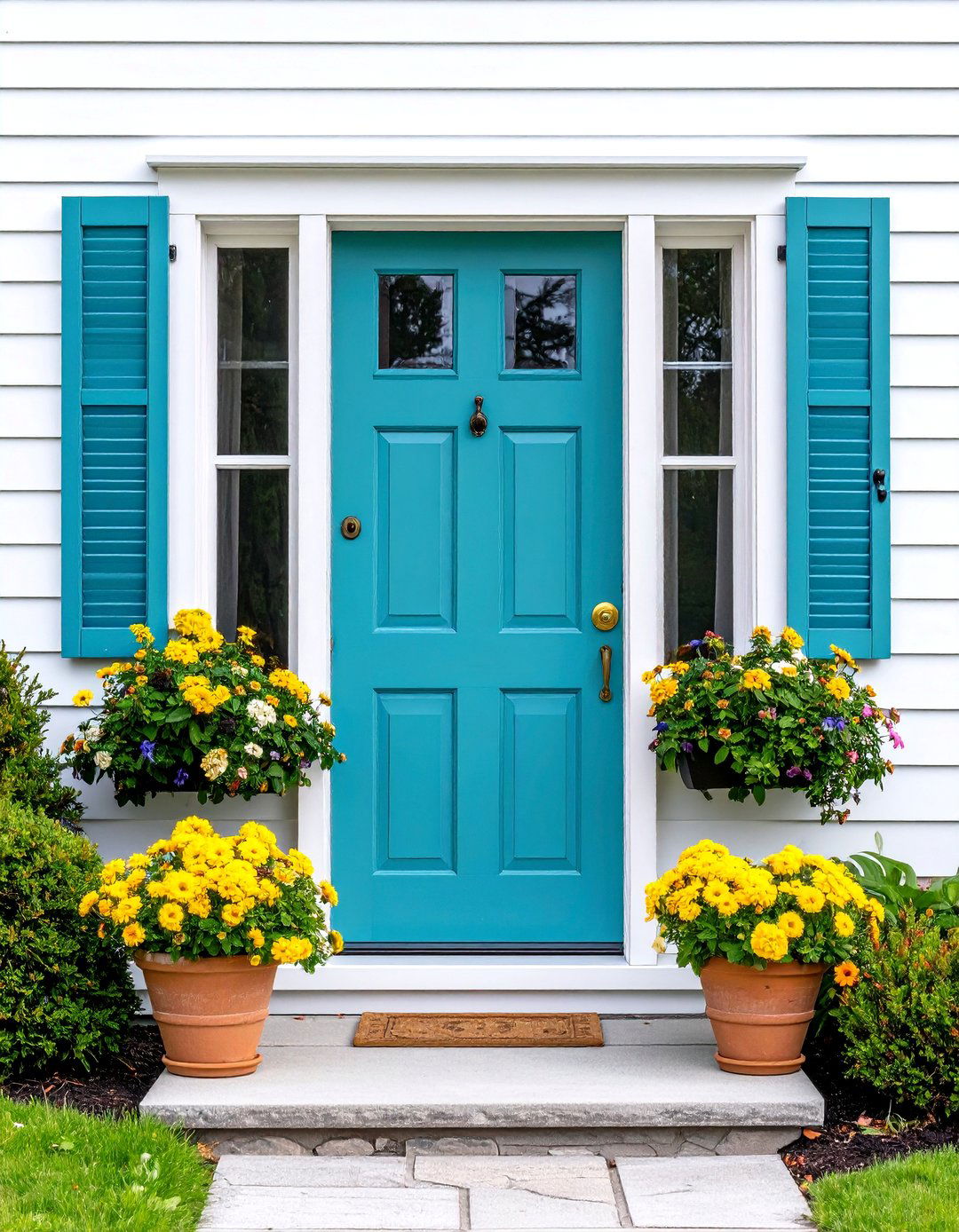
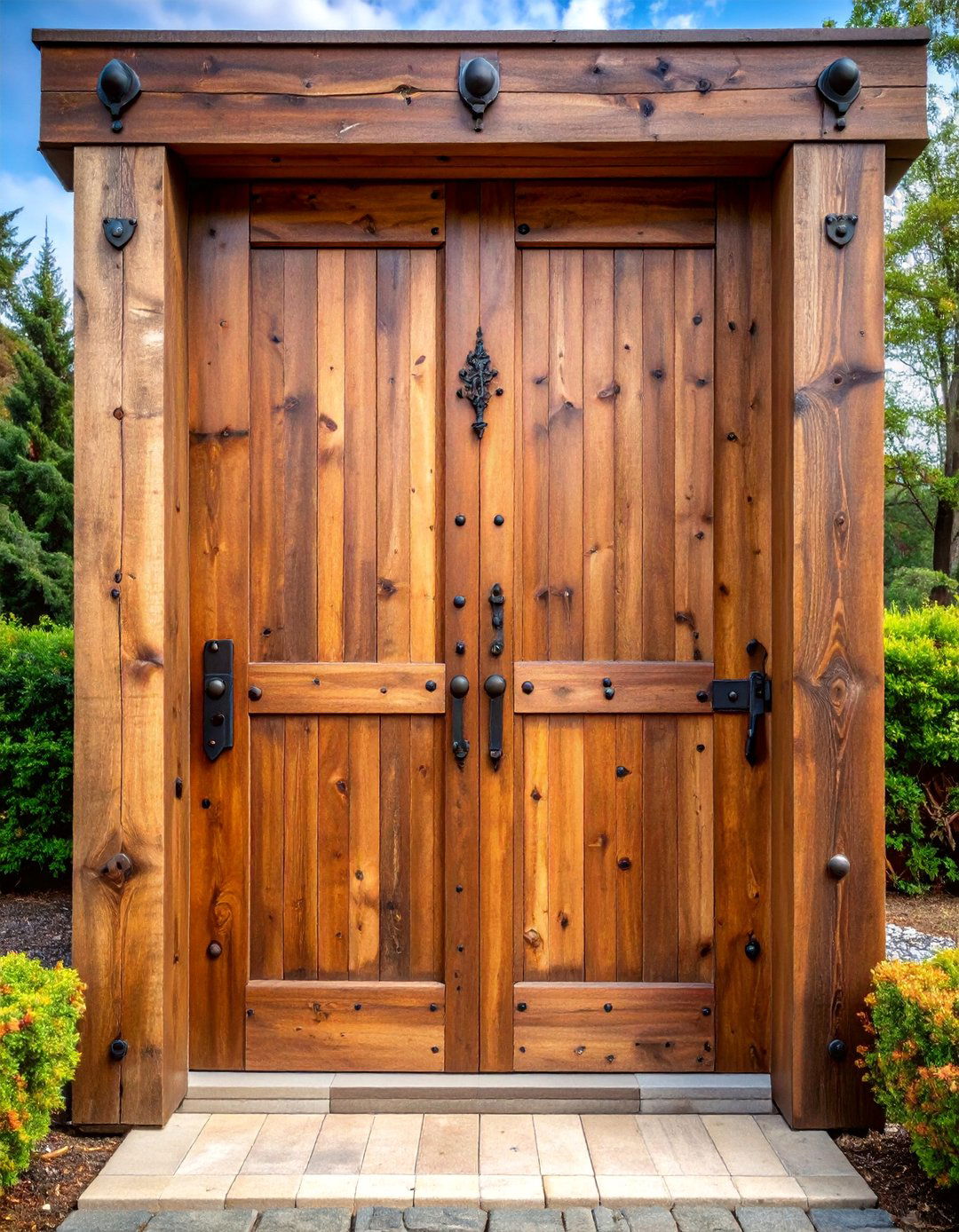
Leave a Reply